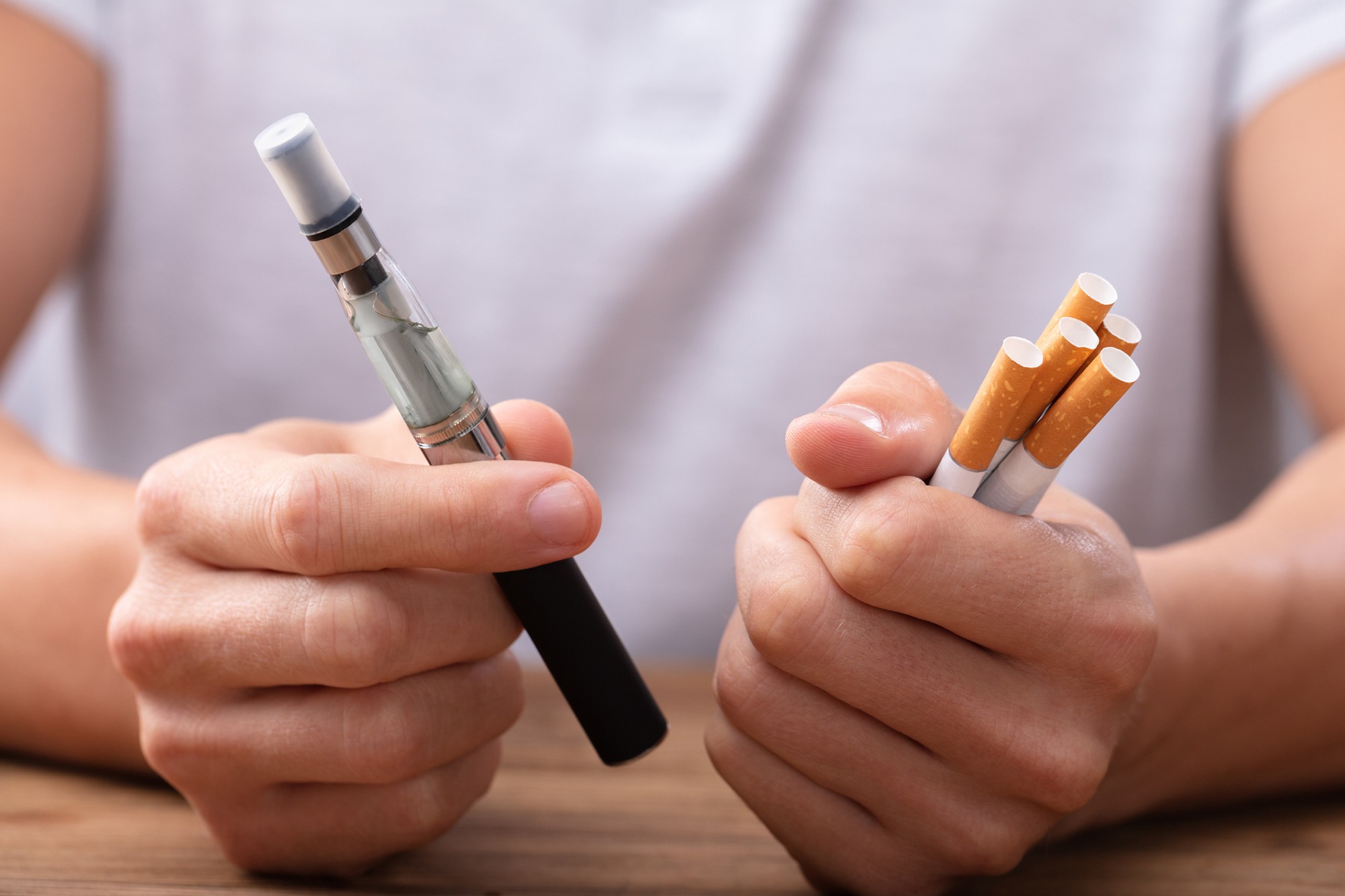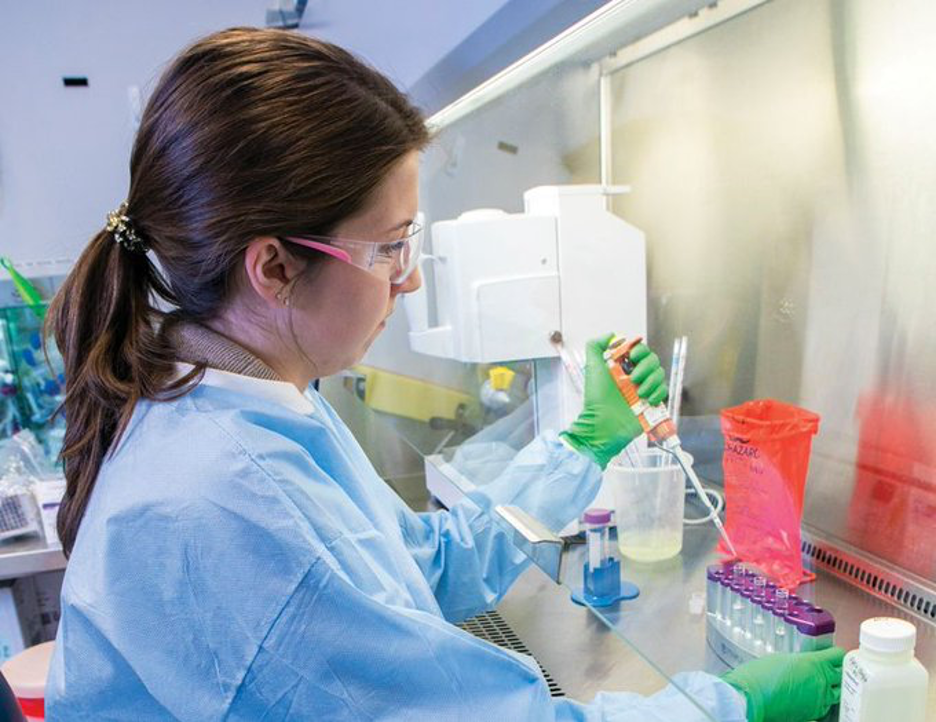HUNT FOR CAUSE OF VAPING ILLNESS SUGGESTS MULTIPLE MECHANISMS OF DAMAGE

The leading hypothesis for the appearance of deadly lung problems does not fit with all presentations of the illness
Experts remain perplexed about what is causing the nationwide outbreak of mysterious vaping-related lung disease that has affected hundreds and killed at least six people. And even the nature of the disease itself is confounding clinicians and public health officials. The only certainty, they say, is that people should not be vaping anything until they figure it out.
The sigh of relief was almost audible after news emerged in early September of a named culprit: vitamin E acetate. But the U.S. Food and Drug Administration soon dampened that enthusiasm, noting that not all tested samples even contain the oily substance. In fact, no candidate substances have consistently turned up across samples so far.
And then there is the question of what people are actually vaping: although most cases involve pods containing THC (the active ingredient in cannabis), not all of them do. Vaping-product manufacturers have sought to distinguish their goods from counterfeits acquired on the street and to blame the latter, but investigators have not yet confirmed the provenance of many of the products involved in the disease. In a good chunk of cases, patients say the one they vaped contained only nicotine. Although it is possible patients do not want to admit to THC use in states where it is not decriminalized, there is no evidence they are lying.
Mired in all of this mystery are the hundreds of occurrences of a puzzling and sometimes lethal respiratory illness whose only commonalities are that stricken patients recently vaped and they are all in the U.S. or its territories. Even the name of the condition remains a matter of debate. All of this confusion “is the strangest part,” says Sean J. Callahan, a pulmonologist at the University of Utah. Callahan, who has treated several patients with the mystery illness, says, “The heterogeneity just makes it really tough” to find a common cause.
When the initial patients in this outbreak turned up in U.S. emergency rooms in April, they did not trigger a blip in public-health radars. Wisconsin and Illinois and their shared border region look like hotspots for cases and could provide clues to what is causing them. As patient numbers grew, the geography of the outbreak expanded, first largely affecting states that are contiguous with Wisconsin and Illinois and then other states bordering those. As of September 12, the U.S. Centers for Disease Control and Prevention had reported at least 380 confirmed and probable cases in 36 states and the U.S. Virgin Islands. The agency announced on September 16 that it had activated an emergency operations center in reaction to the outbreak.
But oddly enough, the disease seems to have stopped cold at the Canadian border, despite its proximity to Wisconsin.* In response to a query about this apparent dividing line, a spokesperson for Health Canada, the country’s national health agency, pointed to its tough laws around vaping, which prohibit all sales of such products, with or without nicotine, to people under the age of 18 and strictly control their promotion at point of sale and even on social media. Canada is also stepping up enforcement and compliance programs.
A recent development could be related to the concentration of early cases in Wisconsin: On September 11, local authorities announced several arrests of residents of the state for manufacturing and selling their own THC-laced vape products. The arrests stem from an incident in early July, said Dan Baumann, a police captain at Wisconsin’s Waukesha Police Department, in a news conference. Two parents turned up at the police station, seeking consequences for their teenage son, who they discovered had been peddling THC vaping products to his high-school peers. The family’s cooperation led law enforcement from Waukesha County to the state’s Kenosha and Racine counties—regions where the earliest cases cropped up. The busts netted THC product worth $1.5 million in street value, along with 31,200 filled vape cartridges and 98,000 unfilled cartridges, officials said.
In its first burst, the outbreak seemed to fit with a pattern of distribution among a group of high schoolers: most of those affected were in their late teens and male. As case numbers mounted, however, the age range has expanded. And despite a battery of tests performed in both patients and product samples, the disease remains a deep mystery. Because some tissue samples from patients have turned up immune cells full of fats, or lipids, a diagnosis of lipoid pneumonia has gained favor among physicians, especially because vitamin E acetate, the only candidate put forward, is a lipid. But Callahan thinks that conclusion is questionable.
Patients with lipoid pneumonia, he says, usually present at an outpatient clinic visit, not at the hospital. They tend to be older and to have accidentally inhaled something oily, such as a mineral oil. On clinical images, the substance in their lungs “looks like fat,” Callahan says, but “that’s not the case with our patients. They’re coming in super-duper sick, acting like they almost have infectious pneumonia, with high inflammatory markers in their blood. They’re just really sick.” If he had to give it a name in the absence of a vaping link, he says he would call it a pneumonitis, or inflammatory lung condition. But Callahan favors a designation he says the CDC has floated: vaping-associated lung injury, or VALI. What he does know, he adds, is that “this is not reminiscent of classic lipoid pneumonia.”
In a case series published on September 6 in the New England Journal of Medicine, which described 53 patients in Illinois and Wisconsin, 100 percent of patients had abnormal lung imaging, one in two showed signs of liver problems, and almost a third had a fever. More baffling, the majority of patients had gastrointestinal symptoms, including nausea, vomiting and diarrhea. Callahan says no one knows why. “Someone brought up the idea that this is something like cyclic vomiting syndrome you see in people who smoke a lot of marijuana,” he says. “But this isn’t really the same.”
Travis Henry, a radiologist who specializes in heart and lung imaging at the University of California, San Francisco, agrees that lipoid pneumonia is not an apt term for the vaping-related disease, given that the former usually develops incrementally, over a longer period of time. He prefers calling this condition acute lung injury because of the rapid deterioration associated with it.
Henry and his colleagues published a separate analysis in the NEJM of lung imaging of 34 patients with vaping-associated lung injury. The researchers concluded that the variety of patterns on the imaging suggests a similar variety of pathways to lung injury. They also wrote that the imaging lacks evidence of fat buildup in the lungs, which is a “hallmark of lipoid pneumonia.” How fat ended up inside immune cells in fluid washed through the lungs remains “total speculation,” Callahan says, but one possibility involves the slippery substance, called surfactant, that coats the lungs where they swap out oxygen for carbon dioxide from the blood. If something badly inflames the lungs, he adds, the lipids in the surfactant might break down and overwhelm the immune cells, filling them with fat.
Callahan thinks that whatever VALI is, it is a novel condition, and others agree. Jennifer Layden, chief medical officer at the Illinois Department of Public Health, asserted in a CDC briefing on September 6 that authorities cannot say for certain that this is a new disease entity. But, she added, emergency room visits for severe respiratory illnesses among young people spiked in mid-2019 over 2018 levels for the same period. That kind of upward shift “would suggest that it’s a new phenomenon,” she said.
Getting final answers to such questions will be a fine-grain process, says Philip Huang, director of the Dallas County Health and Human Services Department, which is following some cases in Texas. “This is what public health does,” he says, comparing the response to tracking down the source of a foodborne outbreak. “You get specimens, you see if there’s contamination, you look through medical charts, you get consistent definitions for clinical symptoms.” In that sense, he says, it is not unlike any other public health outbreak investigation. Yet, he adds, “it’s just crazy to me. These are previously normal healthy teenagers getting intubated and [put] on ventilators.”
The Trump administration has weighed in as the process unfolds, announcing a plan to ban flavoring in e-cigarettes, with the exception of tobacco flavoring, although finalizing that ban will take weeks. States such as Michigan and New York have moved on their own to enact similar bans. In the meantime, Huang says, the only way to prevent the disease is not to vape.
Callahan agrees. “What’s discouraging to me is that the vaping industry has been trying to push forward this idea that this comes from black-market vaping material,” he says. “My patients are flatly denying that to me, and I think that’s important to point out. The safest thing is to not do this stuff until we figure this out.”
*Editor's Note (9/19/19): After this story was published, Canada reported its first case of a vaping illness: a high schooler who vaped daily was admitted to a hospital earlier earlier this summer, but has since recovered.
https://www.scientificamerican.com/article/hunt-for-cause-of-vaping-illness-suggests-multiple-mechanisms-of-damage/




